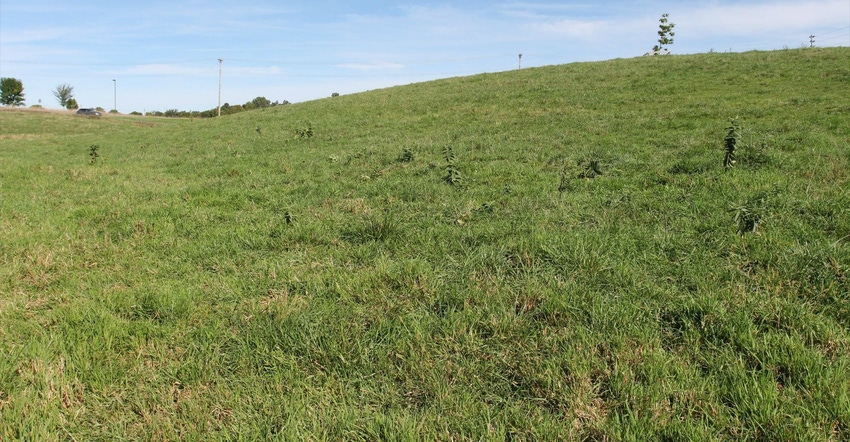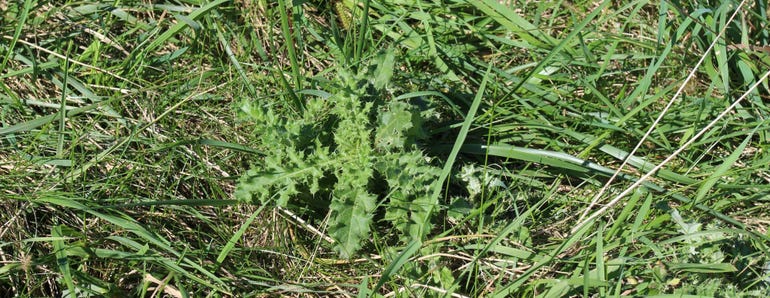October 2, 2019

Fall is one of the best times for managing perennial and biennial weeds in pastures or other areas in grass. As perennial weeds prepare for the upcoming winter, they move energy reserves from shoots to their rhizomes and roots. Systemic herbicides applied at this time are translocated along with the energy reserves to the rhizomes and roots, therefore providing more consistent control than applications made at most other times of the year.
The following considerations and guidelines come from Iowa State University Extension weed management specialist Bob Hartzler and ISU Extension field agronomist Meaghan Anderson.
Most herbicides used in pastures are growth regulator herbicides (Group 4). The group number refers to the site of action of a herbicide. The group number is displayed on the first page of the herbicide label. It is important information for choosing herbicides to apply, as you develop resilient weed management programs that are less likely to select for resistant weeds.

IDENTIFY WEEDS: Correctly identify the weeds of concern; then choose a herbicide that will control them. Foliage of weeds must be in good condition to get effective control.

While products containing picloram (Tordon, Grazon, etc.) and aminopyralid (Milestone, Forefront, etc.) typically cost more than the “traditional” pasture treatment of 2,4-D and dicamba, they generally provide better long-term control of perennials like Canada thistle. Products containing metsulfuron methyl (Group 2) provide an alternative to the growth regulators.
5 tips for effective weed control
Here are five considerations before making any applications:
1. Scouting. Determine target weeds, their location and the physical condition of their foliage. While some fields may require a broadcast application, targeted treatments may be sufficient in others. Perennial weeds such as Canada thistle usually are found in distinct patches that facilitate spot treatments.
2. Healthy weeds. For effective control, weeds must have healthy foliage capable of absorbing and translocating herbicide to the roots. Most of Iowa has had enough late-summer rain to stimulate new growth on perennial weeds. However, if extensive “weathering” or insect feeding damage is evident on the weeds, reduced herbicide absorption may diminish herbicide activity.
3. Herbicide labels. Determine weeds controlled, appropriate application rates and any restrictions for treated areas. Residues of certain herbicide products (picloram, clopyralid, aminopyralid) persist in the foliage of plants in treated areas, and can be moved with forage or in waste of animals consuming the forage. The herbicide residues can damage sensitive plants if moved from the application area in forage or animals.
4. Legumes. Keep in mind that herbicide treatment will control legumes that have been interseeded with the grass.
5. Frost. Herbicide applications can still be effective after a frost if the foliage of the weeds is still active. Make applications on days with sunny conditions and daytime temperatures above 50 degrees F whenever possible.
Rather than simply applying a herbicide to eliminate weed problems in pastures, take time to determine why the weeds are successful in the pasture. A healthy sod should be able to prevent the establishment of most weeds.
Evaluate the soil fertility and stocking rates for grazing, and determine the need for possibly overseeding to thicken the grass. Herbicides are valuable tools for improving pasture quality, but they are not a substitute for good management practices.
Source: Iowa State University, which is responsible for information provided and is wholly owned by source. Informa Business Media and subsidiaries aren’t responsible for any content in this information asset.
You May Also Like




